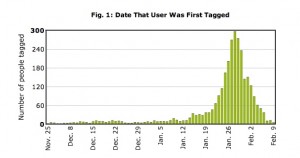Robert Scoble has a very insightful post about the row over FaceBook’s new look. (Apparently lots of users are up in arms about it.) He writes:
Here’s the phases of Facebook:
Phase 1. Harvard only.
Phase 2. Harvard+Colleges only.
Phase 3. Harvard+Colleges+Geeks only.
Phase 4. All those above+All People (in the social graph).
Phase 5. All those above+People and businesses in the social graph.
Phase 6. All those above+People, businesses, and well-known objects in the social graph.
Phase 7. All people, businesses, objects in the social graph.
Phase 5 is known as when Facebook is really going to find its business model. This is why Mark Zuckerberg is absolutely correct to say he can’t listen to people who wants Facebook to get stuck in Phase Four. It was a nice phase, yes, when Facebook only had people in the social graph, but those days are over.
Zuckerberg, in Scoble’s opinion, is a real leader because “he doesn’t care what anyone thinks. He’s going to do what he thinks is best for his business. I wish Silicon Valley had more like him.” So those who are saying the new design sucks “should NOT be listened to.”
Yeah, I know a lot of people are going to get mad at me for saying that. After all, how can a blogger say to not listen to the masses? Easy: I’ve seen the advice the masses are giving and most of it isn’t very good for Facebook’s business interests.
I suspect Scoble is right. It’s an interesting new slant on the Christensen dilemma, though. If you’re too attentive to your customers and your existing business model then you will be wiped out by disruptive innovation coming from elsewhere. On the other hand, if you don’t stay close to your customers then you may go out of business. I suppose the big difference with FaceBook is that it’s users aren’t really customers. They’re getting it for free.
Thanks to Jack Schofield for the original link.

